While the default option on a Windows computer is to automatically setup network connection using the DNS servers of your service provider, it also provides the option to setup network connection using a VPN Service.
In order to setup and use VPN on a Windows 11/10 computer, the first would be to take a look at various VPN service providers that are available in the market and Sign-up for the services of a reliable VPN service provider.
Once you Sign-up for the services of a good VPN provider, you need to gather the following information.
- Web Address or the IP address of VPN Server
- Your VPN Username and Password
- Other Specific requirements (if any)
The web address (www.myvpn.com) or the IP Address (example: 192.000.981) of the VPN server will be required to connect to the VPN service from your computer.
While, the VPN User Name and Password will be required to authenticate your connection to VPN service.
Setup VPN Connection on Windows Computer
Once you have the information required for setting up VPN Network, you can follow the steps below to setup VPN on your Windows 11/10 computer.
1. Go to Settings > Network & Internet.
2. On the next screen, click on VPN in the left-pane. In the right-pane, click on Add A VPN Connection option, located under “VPN” section.
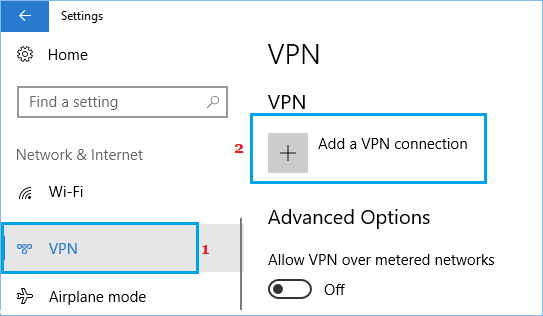
3. On the next screen, you will be required to provide details about your VPN Connection. For the sake of simplicity, we have broken the screen into two sections.
In the first section, you will be required to provide information about your VPN Provider, VPN Connection name, VPN Server address and VPN Connection Type.
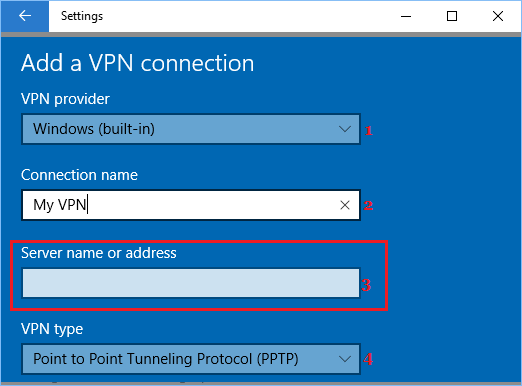
VPN Provider: Choose Windows (built-in)
Connection Name: Type any Name that comes to your mind
Server Address: Here you will need to provide the web address to your VPN Server (www.yourVPN.com)
VPN Type: Select Point to Point Tunneling Protocol or any other option recommended by your VPN provider
After providing above details, scroll down and provide more required details about your VPN Connection.
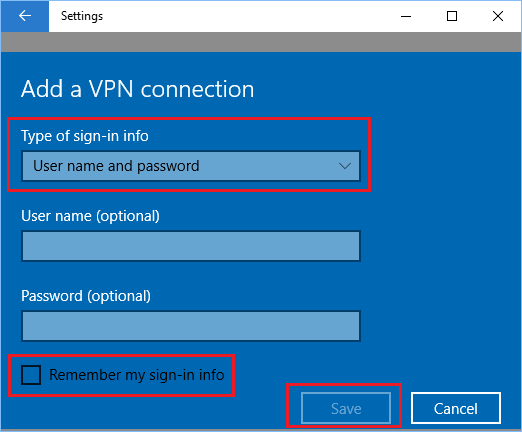
Type of Sign-in-info: Choose User Name and Password as the method you will be using to sign-in to your VPN. You can also select from other options, in case recommended by your VPN Service Provider.
User Name: This Optional.
Password: Optional.
In case you have provided User Name and Password, you can check the option for Remember my Sign-in info.
This will make Windows 10 remember your User Name and Password, allowing you to sign-in to VPN Network, without entering your User Name and Password.
5. After providing all the details, click on the Save button to save these settings.
How to Connect to VPN on Windows Computer
Once the VPN Network is setup on your computer, you can connect to the VPN Network using Settings or directly from the Taskbar.
1. Click on the Network Icon located in the Taskbar and select your VPN Network Name in the menu that appears.
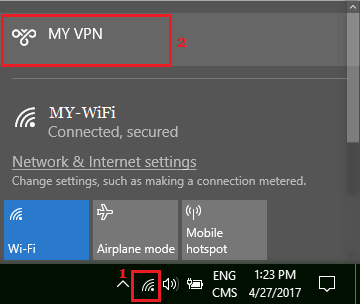
2. On the next screen, you may be requested to enter your VPN User Name and Password in order to login to your secure VPN Network.
Another way of connecting to VPN is by accessing the Settings Menu on your computer.
1. Go to Settings > Network & Internet.
2. On the next screen, click on VPN in the left pane. In the right-pane, click on your VPN Name and then click on the Connect option.
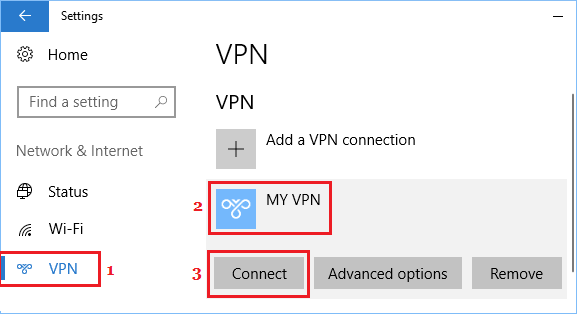
As you can see from the image above, connecting to VPN from the Settings Menu also provides you with access to Advanced Options.